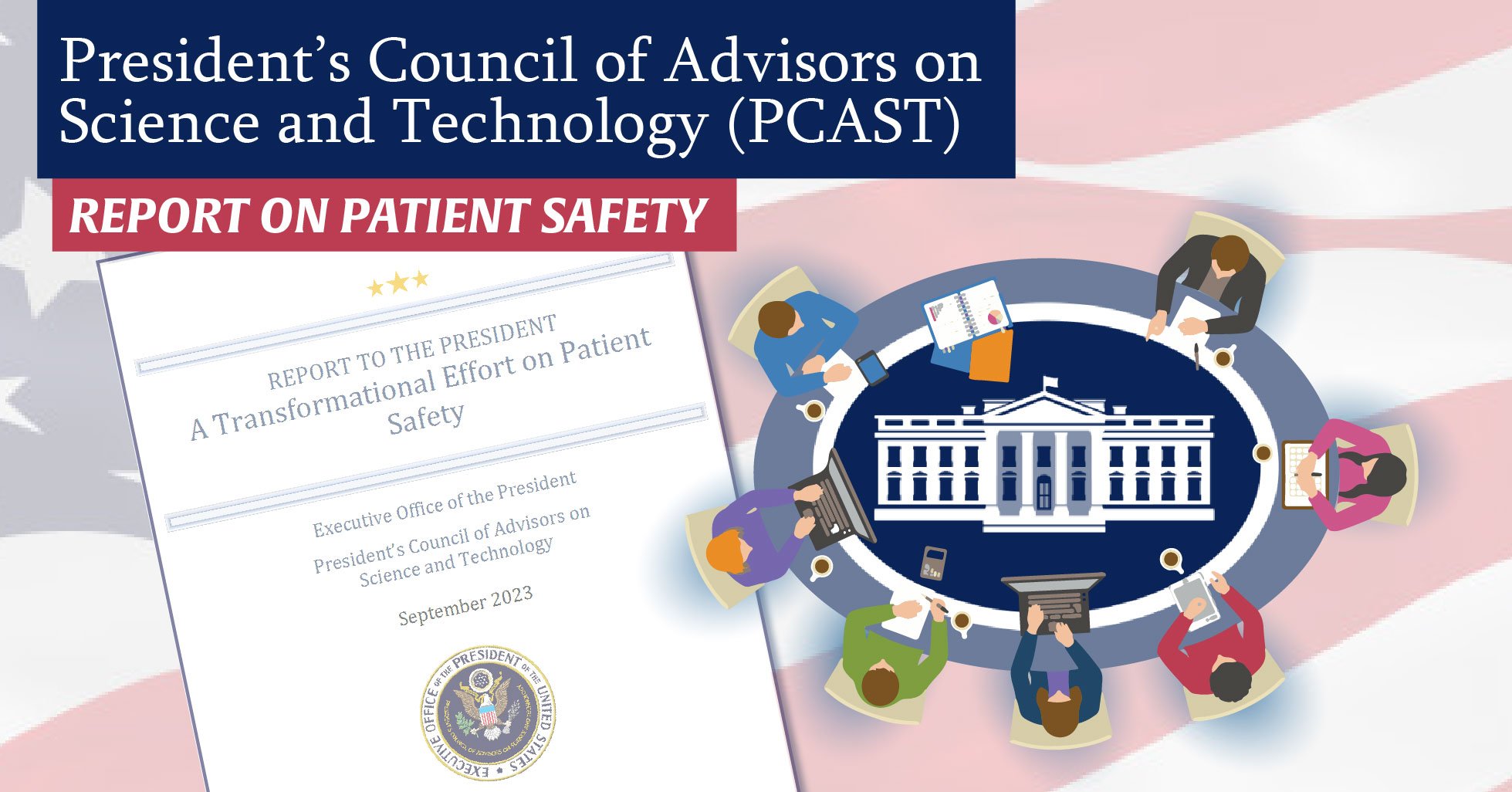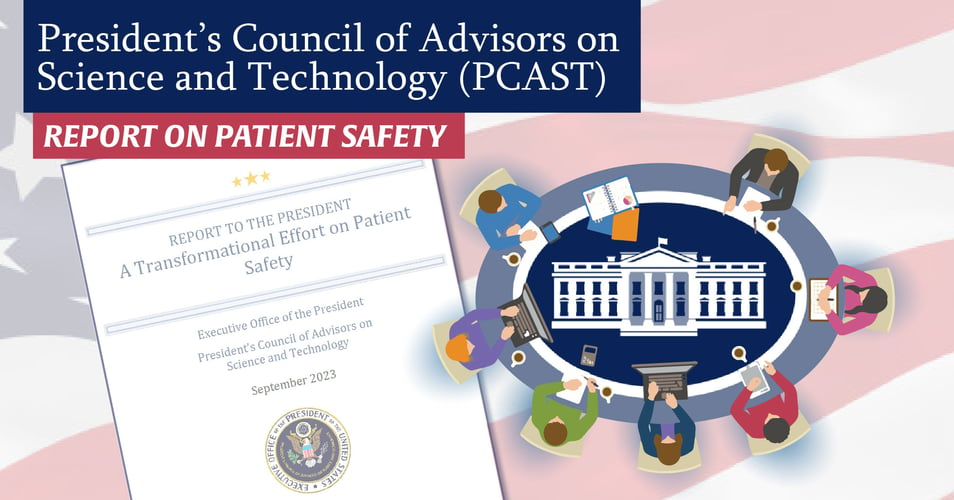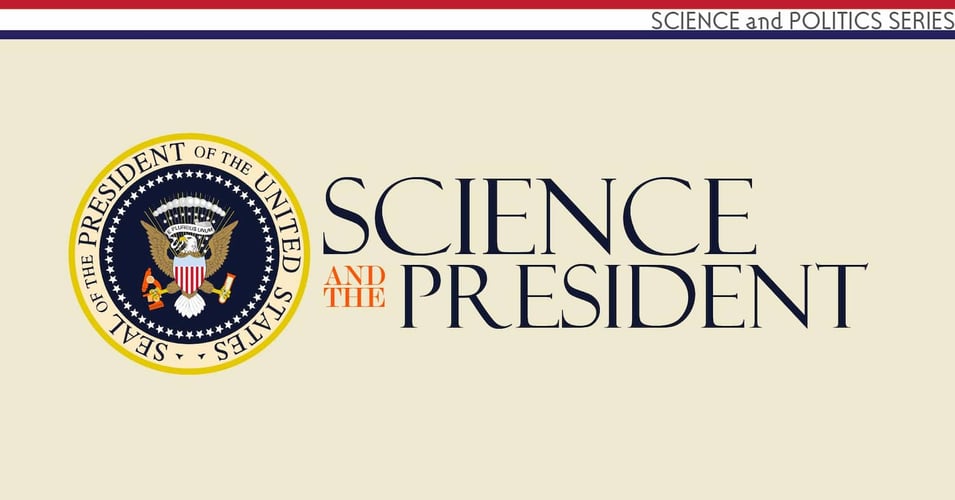The President’s Council of Advisors on Science and Technology: The Patient Safety Report Unpacked

 This past month, the President's Council of Advisors on Science and Technology (PCAST) submitted a report focused on recommendations around patient safety. In today's post, we'll explore who PCAST is, how they pulled together the report, their main recommendations, and in a future post, we will examine what this could mean for our nation's approach to infection control and prevention. Let's dive in!
This past month, the President's Council of Advisors on Science and Technology (PCAST) submitted a report focused on recommendations around patient safety. In today's post, we'll explore who PCAST is, how they pulled together the report, their main recommendations, and in a future post, we will examine what this could mean for our nation's approach to infection control and prevention. Let's dive in!
What is PCAST? The President's Council of Advisors on Science and Technology was formed by executive order in 2001 by then-President George W. Bush, and has been re-chartered every two years by every President since. It follows in the footsteps of science advisory groups formed by previous administrations, all formed to provide the White House with current, unbiased, reliable data and recommendations about scientific priorities, including education, research, commercialization, and regulation.
"...it is the policy of my Administration to make evidence-based decisions guided by the best available science and data. Officials and employees across my Administration shall seek from scientists, engineers, and other experts the best available scientific and technological information and advice." Executive Order, January 27, 2021 |
PCAST has provided reports on a variety of topics, including antibiotic resistance, cybersecurity, nanotechnology, climate change, agriculture, and public health workforce resilience. Policymakers use these reports to inform their decisions about everything from the economy, energy, public health, racial equity, and much more. So far, 2023 has been a banner year for PCAST, with 6 such reports published so far.
Who are the members of PCAST? Currently, PCAST is made up of 27 members and three co-chairs who serve without compensation. Each member is appointed by the President, and come from a range of backgrounds including industry, academia, and non-profit organizations. Current membership includes a Nobel Prize winner, leaders in research, tech giant officers, laboratory directors, foundation executives, professors, and entrepreneurs. These members must approve each report before it is submitted to the White House.
PCAST members and non-members make up working group for each report being compiled. For the recent report on patient safety, the working group was led by two tech giant CEOs and was made up of experts in healthcare equity, policy, quality, and data, as well as patient advocacy. Their meetings are open to the public and available to the general public online, and public input is requested throughout the process of development. The working group reviews, approves, and submits the report to the full PCAST membership.
For even further expertise, PCAST members and working group members call upon experts to offer input, but who are not responsible for the final report. The experts consulted in the preparation of the patient safety report include policy advisors, leaders from federal and state agencies such as the CDC, the Veterans Administration, and the Agency for Healthcare Research and Quality, as well as physicians, patient advocates, professors, researchers, and some industry leaders.
What are the main points of the recent Patient Safety Report? The final report, titled "A Transformational Effort on Patient Safety," was published in September 2023 and presents the problem, as defined by the advisory group, and recommendations, generated by the groups mentioned above. The brief executive summary lays out the current state of patient safety, including the tension between healthcare workers who are committed to "first, do no harm," their challenging work conditions, the lack of consistency in patient safety measures, and the alarming rates of medical errors and preventable adverse effects suffered by patients every year. The recommendations to address these concerns are:
- Establish and maintain federal leadership for the improvement of patient safety as a national priority, including appointing a Patient Safety Coordinator and a multidisciplinary National Patient Safety Team to focus on the populations most affected.
- Ensure that patients receive evidence-based practices for preventing harm and addressing risks. Federal agency leadership would be responsible for identifying patient safety priorities, establishing systemic structures to make changes, make sure that data collection is optimal, and assuring effective accountability.
- Partner with patients and reduce disparities in medical errors and adverse outcomes. The engagement of stakeholders with evidence-based strategies is identified as central, using a "whole of society approach" and an aggressive approach to data improvement and transparency. These two topics are united under one recommendation because there can be no systemic change without involvement of the communities effected by the disparities.
- Accelerate research and deployment of practices, technologies, and exemplar systems of safe care. The report recommends the development of a national patient safety research agenda and the deployment of the most advanced information technology. Most ambitiously, the report urges the development of federal healthcare delivery system capacities (Department of Defense and Veterans Administration) and showcase results as model examples of what works.
In order to accomplish these goals, a "robust national enterprise" is required. Significant collaboration and culture-building will be necessary, especially since the report urges that some of the recommendations be adopted and begin reporting within five years. Some of that work began last year with the establishment of the National Action Alliance to Advance Patient Safety, a public-private partnership. But a lot of work is still needed. In our next post on this topic, we will explore what healthcare experts are saying about the report, especially those professional directly involved in infection control and prevention. In the meantime, tell is what YOU think about the report in the comments below!
![EOScu Logo - Dark - Outlined [07182023]-01](https://blog.eoscu.com/hubfs/Eoscu_June2024/Images/EOScu%20Logo%20-%20Dark%20-%20Outlined%20%5B07182023%5D-01.svg)




